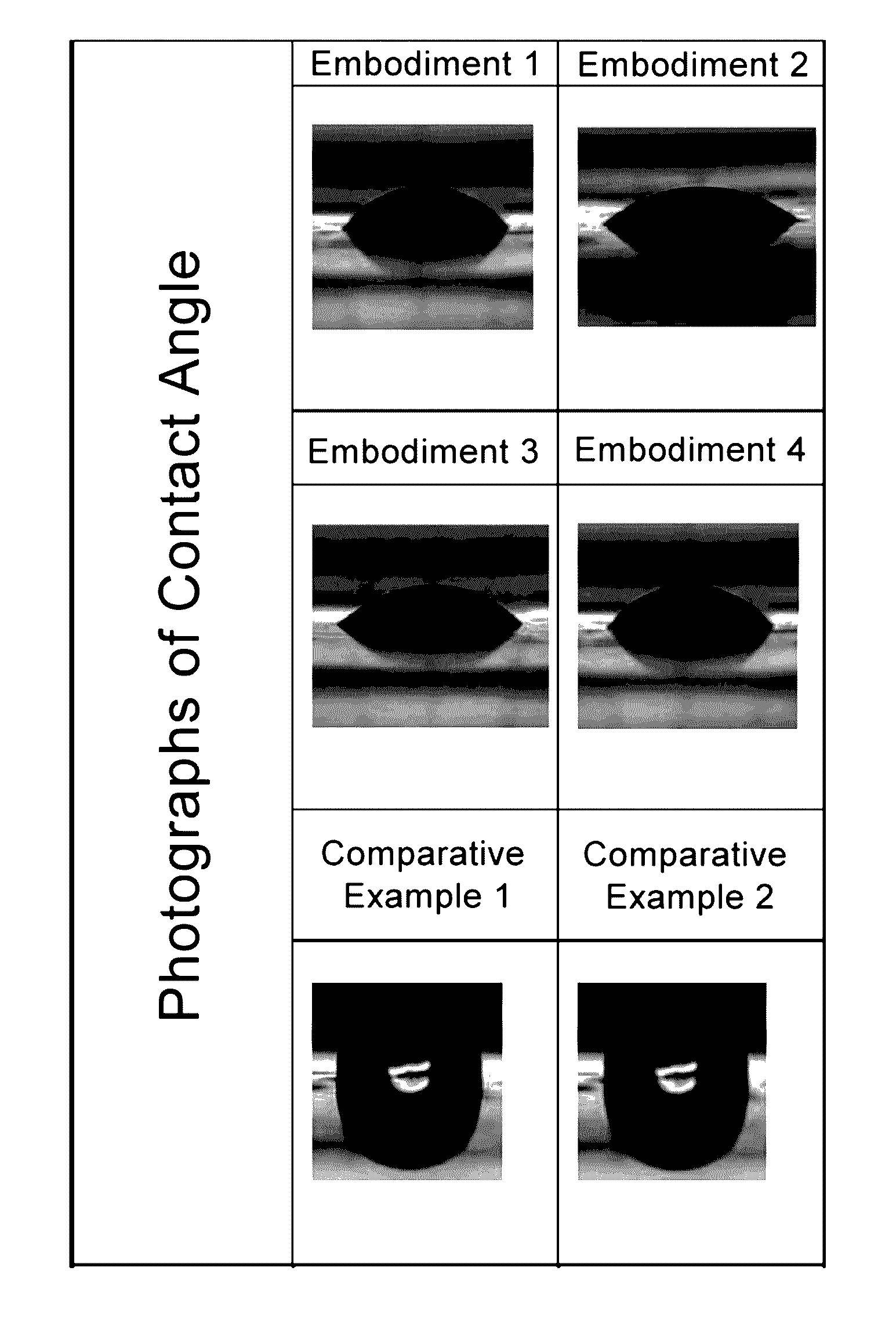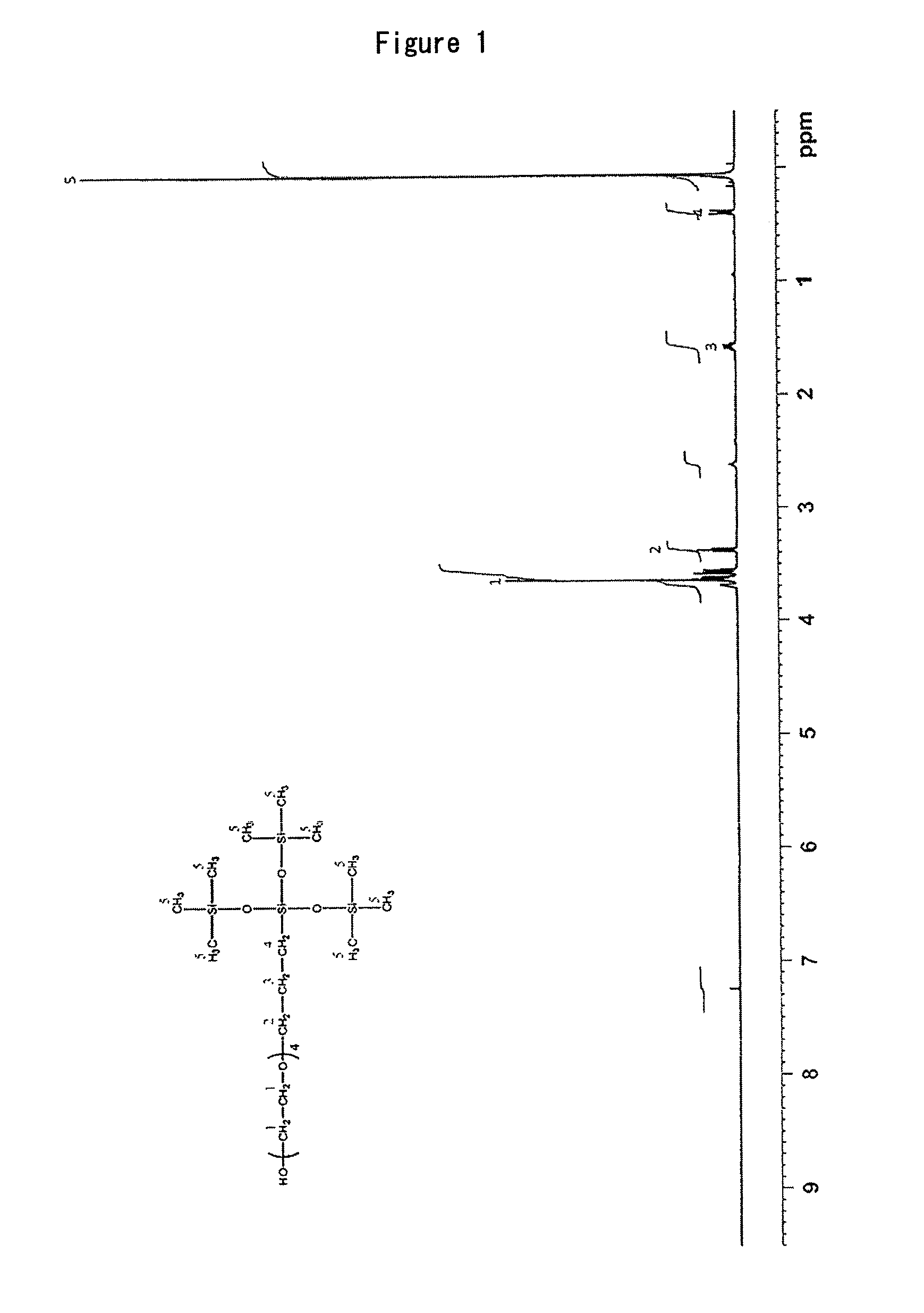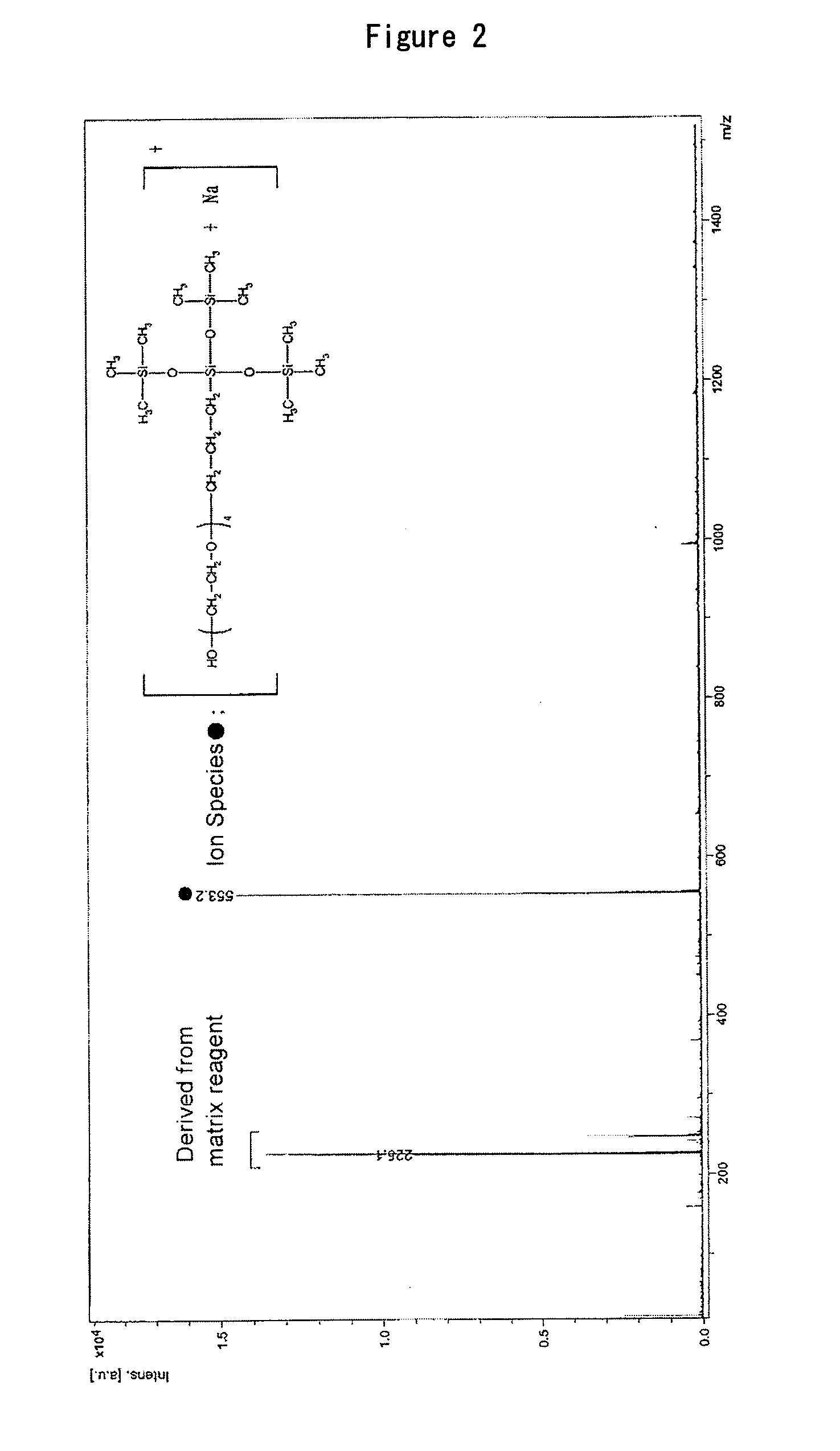Method for fabricating silicone-containing copolymer molded article having hydrophilic surface and silicone-hydrogel contact lens having hydrophilic surface
a technology of hydrophilic surface and copolymer molded article, which is applied in the direction of instruments, other domestic articles, optical elements, etc., can solve the problems of inability to obtain homogenous monomer mixtures, method undesirable, and surface water repellence, and achieve enhanced surface water wettability and surface water wettability.
- Summary
- Abstract
- Description
- Claims
- Application Information
AI Technical Summary
Benefits of technology
Problems solved by technology
Method used
Image
Examples
embodiments
[0227]The present invention will be described in detail based on embodiments below. However, the present invention is not limited to the embodiments.
[Components Employed]
[0228]The names and abbreviations of the chemical substances employed in the embodiments and comparative examples are indicated below.
(a) the Silicone Monomer Having at Least One Hydroxyl Group or Polyethylene Glycol Group in the Molecular Structure Thereof
3Si-GMA: (3-methacryloxy-2-hydroxypropoxy)-propylbis(trimethylsiloxy)methylsilane [CAS: 69861-02-5]
The relative content ratio in 3Si-GMA of the (D1) structure below was 75 mass % and of the (D2) structure was 25 mass %.
[0229]
4Si-GMA: (3-methacryloxy-2-hydroxypropoxy)propyltris(trimethylsiloxy)silane [CAS: 71223-14-8]
The relative content ratio in 4Si-GMA of structure (D3) below was 82 mass % and of structure (D4) was 18 mass %.
[0230]
4Si-4PEG: The silicone monomer obtained in Synthesis Example 1
4Si-6PEG: The silicone monomer obtained in Synthesis Example 2
(b) Hydrop...
synthesis example 1
Synthesis of Silicone Monomer Having PEG Moiety Repeat Number of Just 4
[0234]Commercial tetraethylene glycol was purchased and column purification was used to reduce the repeat number of the PEG moiety to just 4 (Compound 1). Next, just one end of the tetraethylene glycol was protected with trityl chloride (Compound 2). The remaining end was allylated with allyl chloride (Compound 3). To Compound 3 (15.0 g: 31.47 mmol) were added tris(trimethylsiloxy)silane (9.34 g: 31.47 mmol) and platinum divinyltetramethyldisiloxane complex in xylene (300 μL). The mixture was heated for 3 days at 35° C. without solvent. Disappearance of the starting material was confirmed by TLC, after which column purification was conducted to obtain Compound 4 (15.8 g).
[0235]Next, to compound 4 (5.0 g: 6.47 mmol) were added 25 mL of chloroform and triethylsilane (827 mg: 7.11 mmol). Boron trifluoride diethyl ether complex (917.7 mg: 6.47 mmol) was then added dropwise with water cooling and the mixture was stirr...
synthesis example 2
Synthesis of Silicone Monomer Having PEG Moiety Repeat Number of Just 6
[0241]Commercial hexaethylene glycol was purchased and column purification was used to reduce the repeat number of the PEG moiety to just 6 (Compound 6). Next, just one end of the hexaethylene glycol was protected with trityl chloride (Compound 7). The remaining end was allylated with allyl chloride (Compound 8). To Compound 8 (17.8 g: 31.47 mmol) were added tris(trimethylsiloxy)silane (9.34 g: 31.47 mmol) and platinum divinyltetramethyldisiloxane complex in xylene (300 μL). The mixture was heated for 3 days at 35° C. without solvent. Disappearance of the starting material was confirmed by TLC, after which column purification was conducted to obtain Compound 9 (17.6 g). Next, to Compound 9 (5.56 g: 6.47 mmol) were added 25 mL of chloroform and triethylsilane (827 mg: 7.11 mmol). Boron trifluoride diethyl ether complex (917.7 mg: 6.47 mmol) was then added dropwise with water cooling and the mixture was stirred for...
PUM
| Property | Measurement | Unit |
|---|---|---|
| half-life temperature | aaaaa | aaaaa |
| half-life temperature | aaaaa | aaaaa |
| temperature | aaaaa | aaaaa |
Abstract
Description
Claims
Application Information
 Login to View More
Login to View More - R&D
- Intellectual Property
- Life Sciences
- Materials
- Tech Scout
- Unparalleled Data Quality
- Higher Quality Content
- 60% Fewer Hallucinations
Browse by: Latest US Patents, China's latest patents, Technical Efficacy Thesaurus, Application Domain, Technology Topic, Popular Technical Reports.
© 2025 PatSnap. All rights reserved.Legal|Privacy policy|Modern Slavery Act Transparency Statement|Sitemap|About US| Contact US: help@patsnap.com



